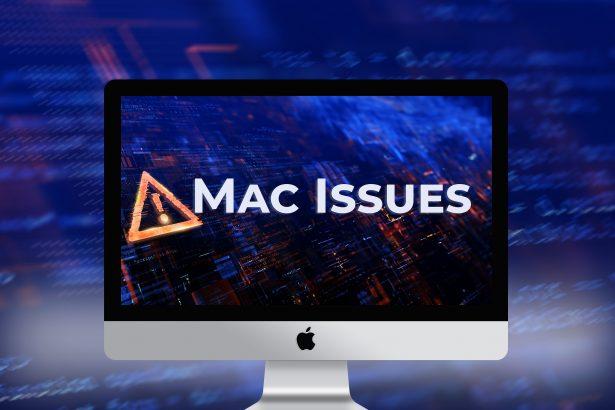ZuRu is a highly dangerous macOS backdoor trojan specifically designed to target developers and IT professionals. It disguises itself as legitimate applications like Termius, iTerm2, SecureCRT, Navicat, and Microsoft Remote Desktop. Once installed, ZuRu silently embeds a post‑exploitation framework that enables full remote control, data exfiltration, and system persistence.
Threat Summary
| Category | Details |
|---|---|
| Threat Type | macOS Trojan / Backdoor |
| Detection Names | OSX.ZuRu, macOS.ZuRu |
| Symptoms of Infection | Installation of fake apps, hidden background processes, LaunchDaemon persistence, C2 communication |
| Damage & Distribution | Remote access, file exfiltration, system reconnaissance; distributed via fake disk images and search ads |
| Danger Level | High – grants attackers stealthy, persistent system control |
| Removal Tool | Download SpyHunter for detection and removal |
How ZuRu Mac Malware Infects Systems
How I Got Infected
ZuRu infections usually begin when a user downloads a seemingly legitimate macOS utility from an unofficial or malicious source. These applications appear functional but carry hidden components designed to initiate the malware installation.
The malware is typically packed inside a .dmg disk image containing both the real app and hidden malicious binaries. When opened, these background processes silently launch and initiate contact with a remote command-and-control (C2) server.
What Does It Do
Once active, ZuRu establishes persistence on the system using a LaunchDaemon with an Apple-like name to avoid detection. It then deploys a powerful Khepri-based post-exploitation beacon which allows attackers to:
- Upload and download files
- Perform detailed system reconnaissance
- Execute terminal commands remotely
- Inject and control processes
- Maintain persistence and perform updates via MD5 checksum validation
The malware continuously communicates with remote C2 domains to receive attacker instructions and update its payload.
Should You Be Worried for Your System?
Yes. ZuRu is a stealthy and powerful threat. It does not display any obvious symptoms, making it ideal for long-term spying and exploitation. Its ability to impersonate trusted developer tools increases the likelihood of users unknowingly installing it. Anyone who has recently downloaded developer utilities from unknown sources is strongly advised to run a full system scan.
Manual Removal of Info-Stealers on macOS
(Recommended for advanced users)
Step 1: Quit Malicious Processes
- Open Activity Monitor (Applications > Utilities).
- Look for unfamiliar processes using a lot of CPU or RAM.
- Select the suspicious process and click the “X” (Force Quit) in the toolbar.
Common process names include agentUpdater, com.apple.system, StealC, VidarAgent, or randomly generated ones.
Step 2: Remove Suspicious Login Items
- Open System Settings (Ventura or newer) or System Preferences (Monterey and older).
- Go to:
- Ventura and later:
Users & Groups > Login Items - Monterey and earlier:
Users & Groups → Login Items
- Ventura and later:
- Remove any unrecognized or unwanted entries using the minus (–) button.
Step 3: Delete Malicious Applications
- Go to Finder > Applications.
- Sort by Date Added to spot recently installed suspicious apps.
- Drag questionable apps to the Trash, then Empty Trash.
Step 4: Remove Malware-Related Files and Launch Items
- In Finder, click Go > Go to Folder.
- Check and clean the following directories:
javascriptCopyEdit~/Library/LaunchAgents/
~/Library/Application Support/
~/Library/Preferences/
~/Library/LaunchDaemons/
Also check these system-level paths:
swiftCopyEdit/Library/LaunchAgents/
/Library/LaunchDaemons/
/Library/Application Support/
- Look for files with strange names or those referencing fake apps or random strings (e.g.,
com.update.agent.plist,vidarupdater,stealerwatcher.plist) and delete them.
Step 5: Remove Rogue Browser Extensions
Safari
- Open Safari > Preferences > Extensions
- Uninstall suspicious extensions
Chrome
- Go to Chrome > Settings > Extensions
- Remove anything unfamiliar
Firefox
- Open Firefox > Add-ons > Extensions
- Remove suspicious entries
Step 6: Reset Browsers to Default
Safari:
- Safari > Preferences > Privacy > Manage Website Data > Remove All
Chrome:
- Chrome > Settings > Reset and clean up > Restore settings to their original defaults
Firefox:
- Help > More Troubleshooting Information > Refresh Firefox
Step 7: Clear Keychain and Update Passwords
- Open Keychain Access (Applications > Utilities).
- Search for stored login credentials related to compromised accounts.
- Remove suspicious entries.
- Change passwords for all major services (Apple ID, email, banking, cloud storage, etc.).
- Enable two-factor authentication (2FA) where available.
Automatic Removal Using SpyHunter for Mac (RECOMMENDED)
(Recommended for all users seeking fast, secure removal)
SpyHunter for Mac is a professional anti-malware solution designed to detect and eliminate Mac-specific threats, including info-stealers, adware, browser hijackers, and trojans.
Step 1: Download SpyHunter for Mac
Click the link below to download the latest version of SpyHunter (Download SpyHunter for Mac)
Need installation help? Follow this guide: SpyHunter Download Instructions
Step 2: Install and Launch SpyHunter
- Open the downloaded SpyHunter-Mac.dmg file.
- Drag SpyHunter to your Applications folder.
- Open SpyHunter and grant necessary permissions when prompted.
Step 3: Scan Your Mac
- Launch SpyHunter.
- Click Start Scan.
- Let it complete the system scan to detect all malware traces.
- Click Fix Threats to remove detected infections.
Step 4: Activate Real-Time Protection
- Open SpyHunter’s Settings and turn on real-time malware monitoring to block future threats.
Prevention Tips to Stay Safe on macOS
- Avoid downloading cracked software or torrents
- Only install apps from the Mac App Store or official vendor websites
- Keep macOS and all apps updated regularly
- Be cautious with email attachments and fake software updates
- Use strong, unique passwords and enable 2FA
- Consider a comprehensive anti-malware tool like SpyHunter for Mac
Conclusion
ZuRu Mac Malware is a prime example of how cybercriminals exploit developer trust and software supply chains to infiltrate macOS systems. It’s stealthy, persistent, and capable of full-scale espionage on infected devices. To safeguard your data and system, remove this malware immediately using a trusted security tool like SpyHunter.




